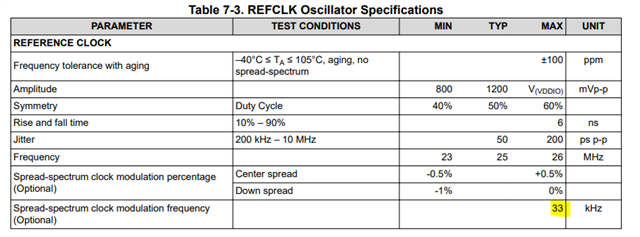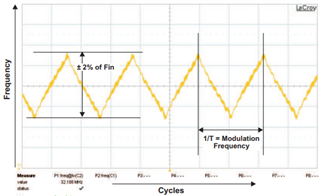Team,
Can you help clarify the spread spectrum clocking requirements for the 960. In the datasheet we specify a +/-.5% or -1% as an amplitude and we then have a 33khz requirement as well.


I don't understand what is meant by amplitude in the spec, is this supposed to be how much we can deviate from from the center frequency?
For example if we start from a 25Mhz clock and we use the -1% does this mean that we can go down to 0.99*25Mhz=24.75Mhz and then back up to 25Mhz?
If above is correct, what is the 33khz spec suppose to indicate?
Thanks for helping clarify!
Best,
David


